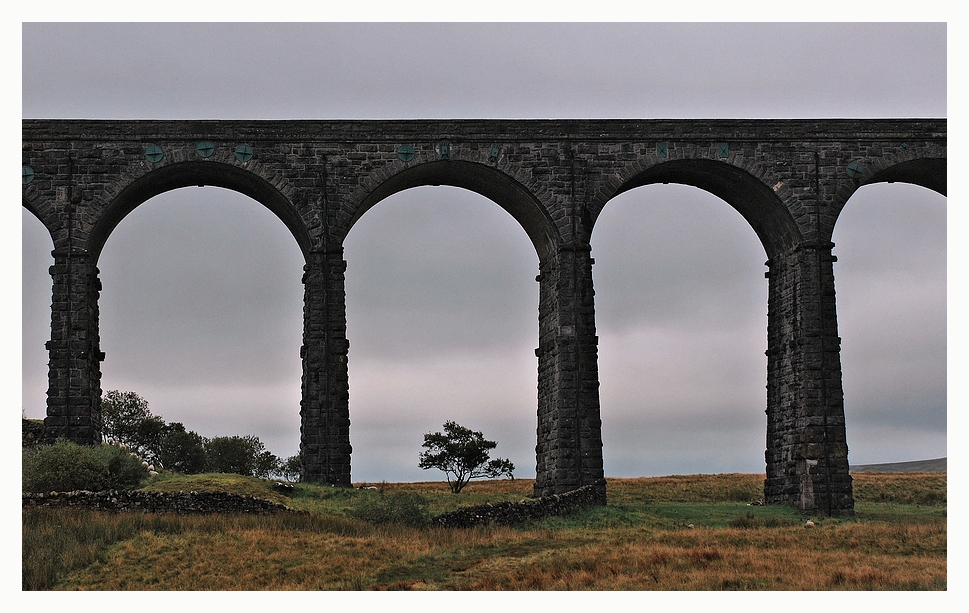Ribblehead Viadukt
aus Wickipedia
Ribblehead Viaduct is a railway viaduct across the valley of the River Ribble in North Yorkshire, northern England.
It is the longest (but not the tallest - Smardale viaduct near Crosby Garrett at 131 ft and Arten Gill at 117 ft are higher) and most famous viaduct on the Settle-Carlisle Railway, a railway line passing through some spectacular British scenery. Ribblehead railway station is located less than half a mile to the south of the viaduct.
Designed by the engineer John Sydney Crossley. The first stone was laid on 12 October 1870 and the last in 1874. It is 104 feet (32 m) high and spans 440 yards (402 m). It is made up of 24 arches. It is located at the foot of the mountain of Whernside.
The viaduct is curved, and so may be seen by passengers on the train. The train journey from Settle to Carlisle is short enough to allow the Yorkshire Dales holidaymaker to make a return day trip (steam-hauled, in the tourist season) including a few hours in the border town of Carlisle.
About two thousand Navvies building the viaduct established shanty towns on the moors, named after victories of the Crimean War, sarcastically for posh districts of London, and Biblical names. There were smallpox epidemics and deaths from industrial accidents; the churchyard at Chapel-le-Dale had to be extended.
The Settle & Carlisle line is one of three north-south main lines : the other two are the west and east coast lines through Penrith and Newcastle respectively. British Rail attempted to close the line in the 1980s, citing the reason that the viaduct was unsafe and would be expensive to repair. A partial solution to this was to single the line across the viaduct, preventing two trains from crossing simultaneously. The viaduct, along with the rest of the line, was maintained and there are no plans to close it.
The viaduct is Grade II* listed and a Scheduled Ancient Monument.










islay mist 22/10/2008 21:57
das hat was typisch nord- oder mittelenglisches, in s/w bestimmt auch gutlg olaf